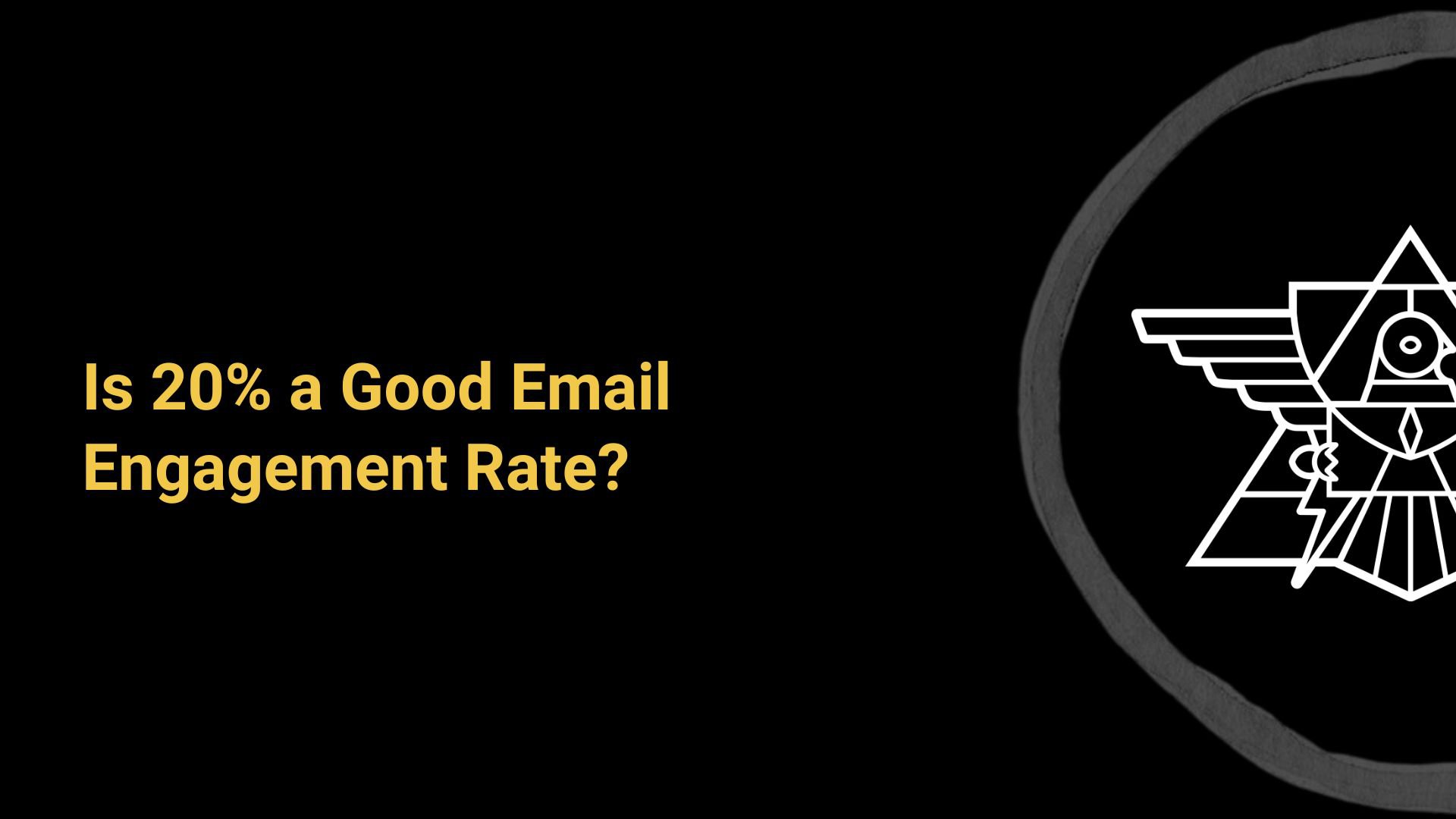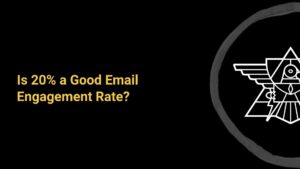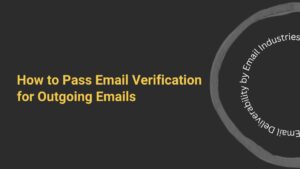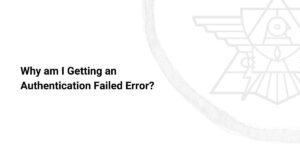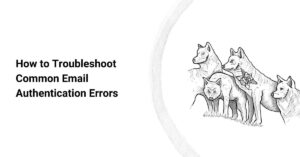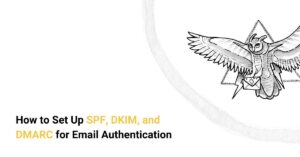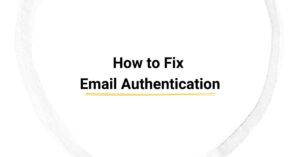Is 20% a good email engagement rate? We are sure you’ve asked yourselves more than once whether that number means you're on the right track. And let us tell you. You're not alone. It’s one of the most searched questions in email marketing, and for good reason.
Email engagement metrics can be confusing. You might see a 20% open rate or CTR and think, “Is that good? Bad? Typical?” The answer depends on what exactly you’re measuring and who you’re sending to. Without proper context, numbers like this don’t mean much.
In this guide, we’ll break down what email engagement rate actually includes, explain where that 20% number lands across various metrics, and show how benchmarks vary between industries like SaaS, ecommerce, and nonprofits. You’ll also get practical tips on how to read your numbers, improve performance, and use email marketing analytics the right way.
If you want to measure your email performance accurately, start with clear definitions and reliable data.
What Does Email Engagement Rate Mean?
When marketers talk about email engagement, they usually mean a combination of several behaviors—not just opens—but the total number of interactions, such as opens, clicks, and conversions. Engagement is a broad term that includes various email KPIs, from the moment your recipient sees your subject line to when they click, convert, or forward the message.
Understanding your email engagement metrics is the first step toward improving campaign performance. But to make sense of them, you need to know what you're measuring.
Open Rate
This shows the percentage of people who opened your email out of those who received it.
- Typical Range: 20–30%
- Influencing Factors: Subject line, send time, sender name
- Caution: Apple Mail Privacy Protection has affected open rates as a reliable signal.
Click-Through Rate (CTR)
CTR refers to the number of recipients who clicked on a link in your email.
- Typical Range: 2–5%
- Above 10%? That’s outstanding and rare across any industry.
- Improvement Tip: A clear CTA with well-placed buttons helps improve this.
Click-to-Open Rate (CTOR)
CTOR looks at how many people clicked after opening. It's a better indicator of email content performance.
- Typical Range: 10–20%
- High CTOR = engaging content that matches subject line expectations.
Other Metrics
- Unsubscribes: Should be below 0.5%
- Bounce Rate: Under 2% is a healthy benchmark
Understanding the 20% Engagement Rate Benchmark
“Is 20% a good email engagement rate?” Let’s unpack that with specifics. Because the truth is that it really depends on what you're measuring.
Email marketing analytics often throw out numbers without enough context. A 20% rate could mean open, click, or even bounce. That’s why we need to break it down.
Is 20% Considered Good?
- Open Rate: 20% is often considered a good email open rate across industries..
- CTR: 20% is exceptional. Most businesses sit between 2–6%.
- CTOR: 20% means your content did its job — it’s a strong result.
- Bounce Rate: If you’re hitting 20% here, there’s a serious issue.
Depends on the Metric You’re Measuring
Saying “we got 20% engagement” without clarity is misleading. Email KPIs aren’t interchangeable.
Think of it this way:
- 20% open rate = decent
- 20% CTR = elite
- 20% CTOR = impressive
- 20% bounce = disaster
Always specify what you’re talking about when reporting results.
Industry-Specific Engagement Benchmarks
Now that we’ve clarified what 20% can mean, let’s look at how this metric holds up across different industries.
This is where email benchmarks really matter, because SaaS, ecommerce, and nonprofits don’t behave the same way. Your campaign performance will depend on your list, target audience, and goals..
A 20% open rate for one industry might be standard and a sign of trouble in another. That’s why comparing your numbers to industry averages gives better context than relying on a global “good vs bad” scale. Let’s break it down.
Ecommerce businesses
- Open Rate: 15–25%
- CTR: 1.5–3%
- Takeaway: A 20% open rate is strong. If you get 20% CTR, you’re outperforming nearly everyone.
B2B & SaaS
- Open Rate: 20–30%
- CTR: 2–6%
- Takeaway: 20% open is solid, but a 20% CTR would be outstanding. Focus on email KPIs like CTOR and conversions.
Nonprofits
- Open Rate: 25–35%
- CTR: 3–5%
- Takeaway: Supporter lists are highly engaged. 20% CTR here is rare and impressive, but a 20% open rate may be below expectations.
Newsletters/Media
- Open Rate: 20–40%
- CTR: 1–4%
- Takeaway: High open rates are common. CTRs above 5% show highly engaged readers.
For more benchmark breakdowns, check our full article on email benchmarks for your industry.
Factors That Affect Engagement Rates
Hitting a good engagement rate doesn’t happen randomly. There are several components that influence whether people open, click, or ignore your emails.
These factors show up across your email marketing analytics and tweaking them can make a major difference.
List Quality
If your list is outdated, full of cold contacts, or poorly segmented your numbers will suffer.
A clean list with recent activity and verified emails helps you hit consistent KPIs.
Regularly removing inactive subscribers not only improves engagement but also protects your sender reputation and improves deliverability over time.
Segmentation
Stop sending the same message to everyone. Use behavior, purchase history, or lifecycle stages to group subscribers.
Segmented emails almost always beat general campaigns in performance.
Tailored messaging is one of the most effective ways to improve campaign performance and maintain strong email engagement metrics across all audience types.
You’ve only got a few seconds to grab attention. Subject lines that create curiosity or clarity usually outperform the rest.
Pair with a preview that reinforces the message not one that repeats it. Both elements directly impact your email open rates, and small tweaks here can lead to higher open rates and big improvements in engagement.
Send Frequency
Send too often? People unsubscribe. Too rarely? They forget you.
Test frequency and monitor unsubscribes, bounces, and CTR to find your ideal rhythm.
Use your email marketing analytics to spot patterns and adjust based on what your audience responds to not just what fits your calendar.
Content & CTA Placement
Great content doesn’t need fluff. Say what matters, say it early, and make the CTA obvious.
Short paragraphs, bullet points, and one main action tend to perform best.
Keep in mind that readers skim. A well-placed CTA can significantly boost click-through rates and overall email engagement.
Mobile Optimization
Most recipients will view your email on their phone. If your layout isn’t mobile-friendly, don’t expect high CTR or conversions.
Buttons should be easy to tap, fonts should be readable without zooming, and images should load fast.
Optimizing for mobile isn’t optional anymore but it’s rather a baseline for modern campaign performance.
How to Improve Your Email Engagement Rate
You’ve checked the numbers. They’re not bad but they sure could be better. So how do you lift your email engagement metrics without overhauling everything?
Here’s what to test first.
A/B Test Subject Lines
This is the lowest-effort, highest-impact place to start. Try versions with curiosity, urgency, or personalization.
Track open rates and pair results with CTR or CTOR for full picture insights.
Personalize Content
Address readers by name. Use behavior-based triggers. Make sure you're sending relevant content that feels written for them, not for everyone.
Mobile First Design
Design for thumbs, not clicks. Use large buttons, short headlines, and fast-loading images.
Re-Engagement Campaigns
Send win-back messages to subscribers who haven’t opened in 60 or 90 days.
Offer an incentive, ask for feedback, or simply check in.
Track and Refine with Email Marketing Analytics
Use your platform’s data to see which campaigns had the best CTR, CTOR, and conversion rates.
Learn what works and repeat it with intention.
Common Misinterpretations of Engagement Metrics
Even with good numbers, there’s room to misread the story. Here are some of the most common ways email marketers misinterpret email KPIs.
Open Rates Are Misleading
With Apple Mail and privacy changes, opens aren’t always reliable. Treat them as directional — not absolute.
Look at trends over time instead of isolated spikes.
One Metric ≠ Total Success
You might get a 25% open rate but if CTR is 0.5%, something’s broken. Use a combination of email engagement metrics to gauge performance.
Spam & Deliverability Issues Are Often Missed
Low opens and high bounces might mean your emails aren’t landing in inboxes. Run deliverability tests and monitor domain reputation.
Conclusion
So — is 20% a good email engagement rate?
That depends entirely on what you’re measuring. For open rates, it’s solid. For CTR, it’s excellent. For bounce, it’s a red flag.
To make your numbers work harder, track multiple email KPIs, segment your audience, and optimize content regularly. Focus on realistic goals that reflect your business, not generic benchmarks.
Not sure if your email metrics are on track? Talk to our email experts.

